
5 minute read
must read
THE MOSTLY TRUE STORY OF TANNER & LOUISE
A college dropout needs some cash. A job is offered to be a caretaker for an elderly woman. No problem. That is until 21-year-old Tanner Quimby meets 84-year-old Louise, who wants nothing to do with a caretaker.
Advertisement
But then Tanner notices some oddities, such as Louise’s tightly locked shed and that the suspect of one of the “biggest jewelry heists in American history” happens to look like Louise.

And then, late one night, Louise insists they leave, beginning an adventure neither will ever forget.
Colleen Oakley, an Atlanta resident, is the best-selling author of “The Invisible Husband of Frick Island.”
new this month:
Named as one of the most anticipated books of the year by several publications, “Pineapple Street” promises to be “a deliciously funny, sharply observed” debut novel.

Rife with the “indulgent pleasures” of life among New York’s one-percenters, “Pineapple Street” is a smart, escapist novel that “sparkles with wit.”
“War Diary” is a gripping recounting of the first 41 days of the war in Ukraine. Yevgenia Belorusets was in her hometown of Kyiv when the war began last February.

Belorusets details the impact the conflict had on the residents, how the city pulled together to support each other, and the “danger of a routine coffee run.”
A collection of 15 stories, including one chronicling two sisters who deal with loss and memory on a perfect summer evening; a story of alienation and miscommunication with a “fresh twist on a folkloric classic”; and a “fantastical,” story that examines a mother-daughter relationship. A suspenseful novel “about the mysteries of fate, the unbreakable bond of siblings, and a notorious serial killer who was said to know the future.”
Katie Shaw was on the cusp of graduation, had a boyfriend and a little brother she protected fiercely, but a violent stranger “changed the fate of her family forever.”

Golden Bear Golf Club is among Hilton Head’s best golf. The 7,014-yard, par-72 Nicklaus-designed golf course offers:


• Outstanding driving range & practice facility
• Ladies-friendly tees
• Corporate outings, tournaments & golf packages
• Full-service clubhouse and grille
• Four-star rating by Golf Digest

Located on Hilton Head Island, Highway 278, inside Indigo Run
For a tee time, call 843.689.2200
Written by Clay Bonnyman Evans
Spring is nearly upon us, and for anglers in and around the coasts of South Carolina’s Lowcountry, that means it’s sheepshead time.
March and April are prime months to go after the blackand-white-striped, spine-backed fish with famously — some say unsettlingly — human-like teeth.
“That time of year the sheepshead bite is really good. And it’s a really good fish to eat — awesome, light and flaky,” says Capt. Jim Clark, a veteran guide of more than 20 years and owner-operator of the 37-foot, twin-motor catamaran, Stray Cat.
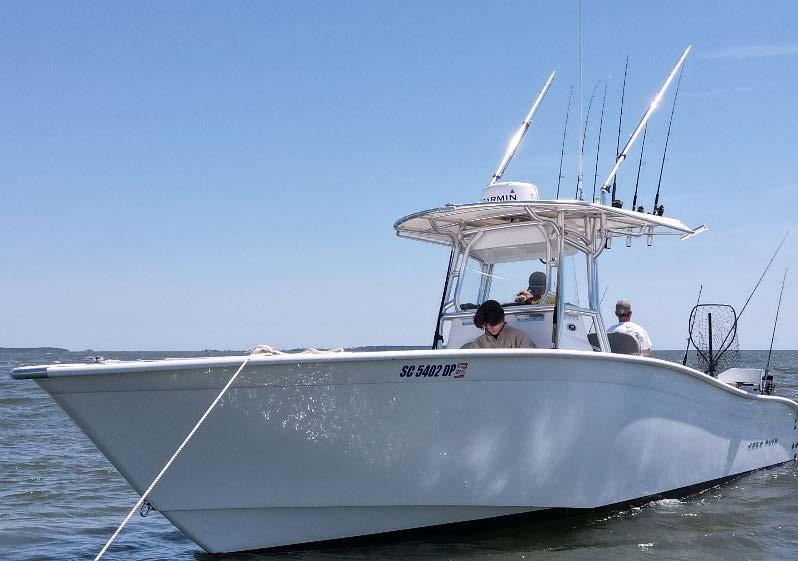

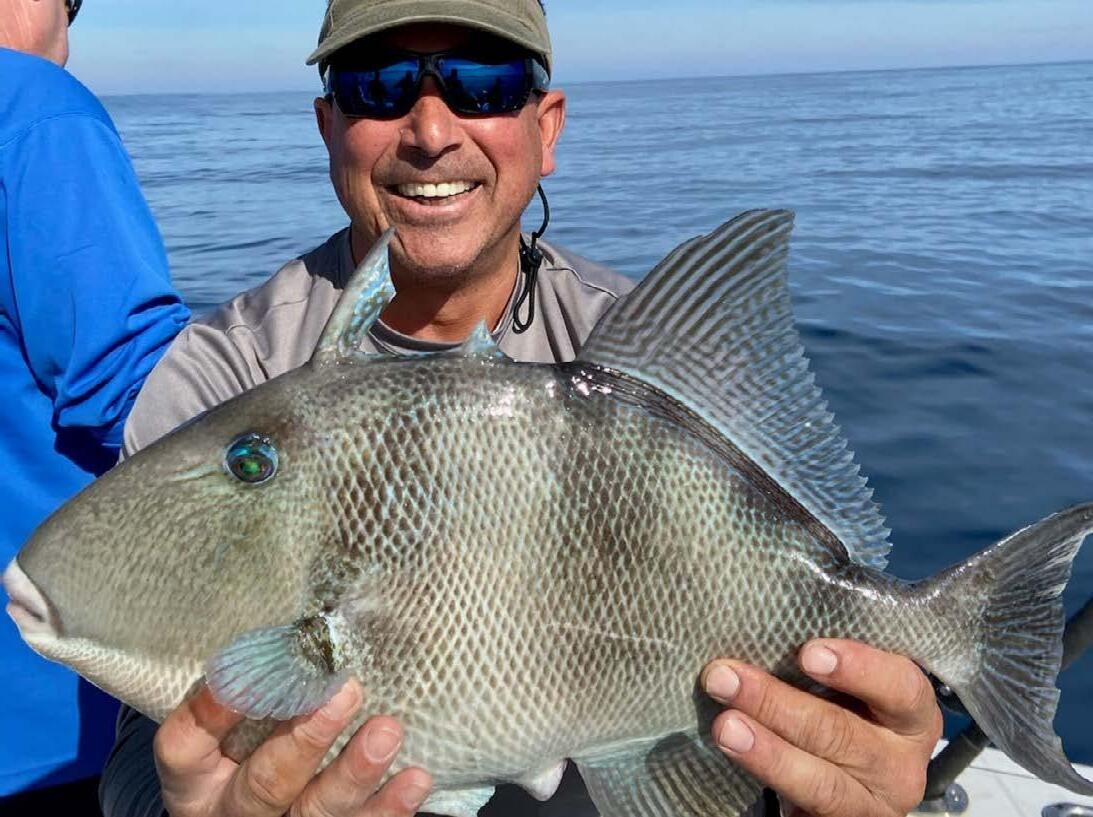
Sheepshead typically grow to about 17 inches and average between 2 and 7 pounds, though the world record is more than 21 pounds, says Clark, who also operates the dock for Hilton Head’s North End Charter Fleet. Also known as “convict fish” by virtue of their distinctive vertical stripes, their square, “human” teeth don’t just give them a toothy grin, but also allow them to feed on hard-shelled prey such as mollusks and barnacles.
Sheepshead are plentiful in and around Hilton Head in early through mid-spring, says Clark, whether you’re fishing a big boat at offshore wrecks and reefs or smaller inshore craft near bridge abutments. Anglers typically fish with fiddler crabs bought or gathered from local marsh flats.
crafty fish, Clark says, capable of “stealing your bait before you even know you have a bite. The sheepshead bite is very delicate. You have to hold things real still. It’s pretty handson.” red bass, and sea trout, says Clark, who in 2007 was named to George Poveromo’s World of Saltwater Fishing A-Team, featuring, “captains and pros (who are) among the very best in the sport of saltwater fishing.”
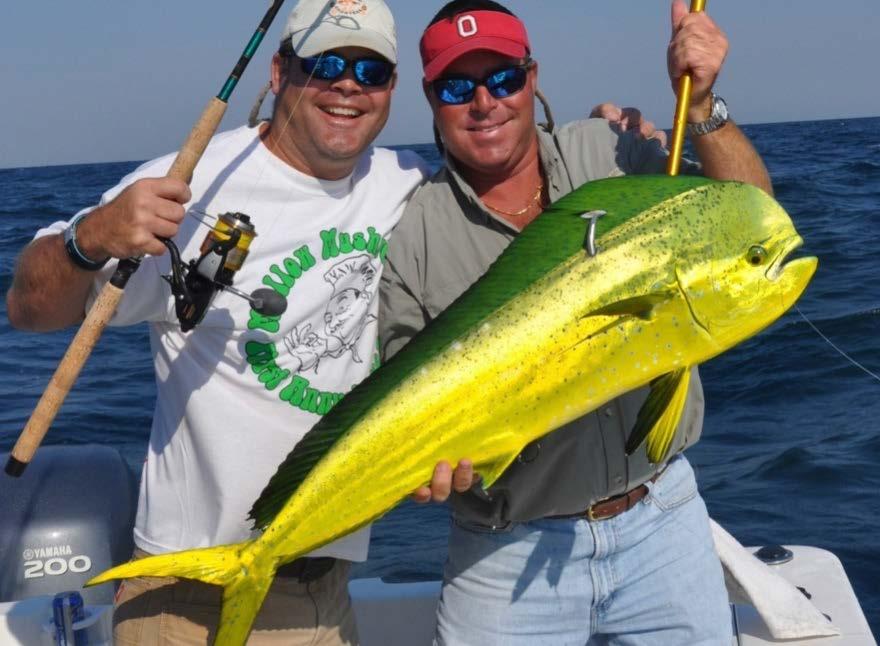

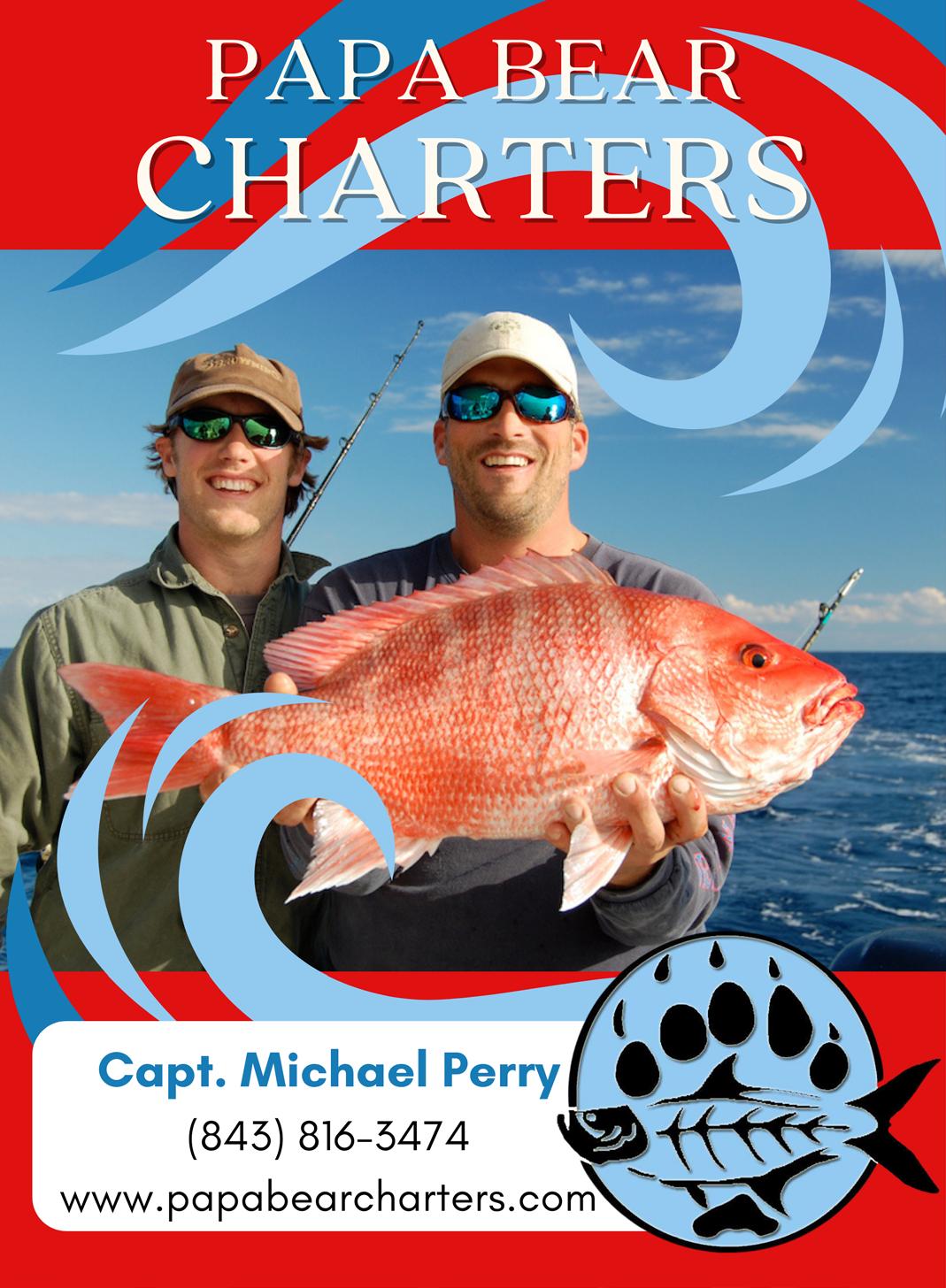




Sea trout typically average two pounds, though the largest one caught in South Carolina waters tipped the scales at 11 pounds. Red fish run from a couple of pounds up to 15 pounds, though the biggest one ever caught weighed a whopping 94 pounds.

“Both of those are really great to eat. We catch them in the creeks, flats and different feeder creeks that empty out into bigger water,” though you can also catch red fish around reefs and wrecks, Clark says.
Farther offshore, spring is a good time to go after triggerfish, red snapper, grouper, amberjack and black sea bass.
“We go 25 to 40 miles offshore for bottom fishing,” Clark says. “It’s a great time, but you want to make sure you go out on good-weather days. We don’t go out if (conditions) are nasty.”
This spring there is also a tournament through April 15 that is taking top anglers 70 miles offshore into the Gulf Stream in search of mahi-mahi and wahoo.
“But that’s a whole different ballgame,” he says.
By the time April is leaning into May, it’s time to start fishing for Clark’s recognized specialty, cobia, aka ling cod and, in Hilton Head waters, brownies.
“We call them brownies,” Clark says with a smile, “because they are brown. And because we basically have no imagination.”
Local cobia are typically 20 to 50 pounds, he says, but the world record is 135.9 pounds.
“The cool thing is just about the time you get tired of fishing for sheepshead, maybe the third week of April, cobia fever hits. When the water temperature gets above 69 and the jasmine starts to bloom, those are the telltale signs that cobia might be around,” he says. “There’s a real good bite at the end of the month, up in the rivers, in Port Royal Sound. You can catch 40- or 50-pound fish and you don’t even have to leave the Sound.”
Sheepshead
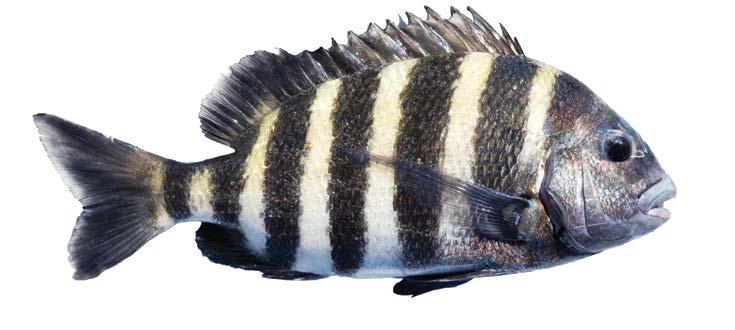
Body gray and nearly oval with five to six dark vertical bars and one on nape. No dark spot near origin of lateral line. Four broad incisor-like teeth on both sides of anterior jaw, several molarlike teeth also present. Dorsal fin has 12 spines and 11 soft rays. Second spine of anal fin very strong.
Amberjack
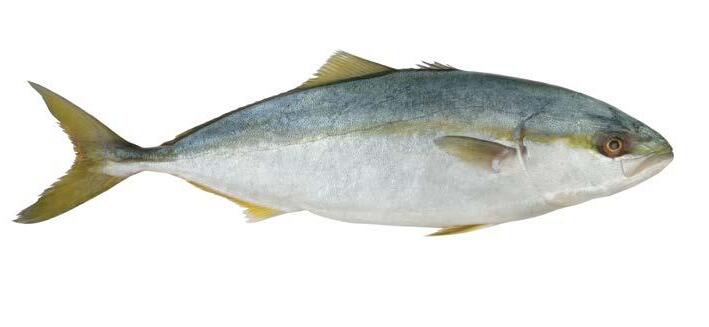
A brownish or bluish-grey back, a silvery-white belly and an amber horizontal strip along the middle of their body. Juveniles have a yellow color and five or six dark vertical bars along the sides.
Black Drum
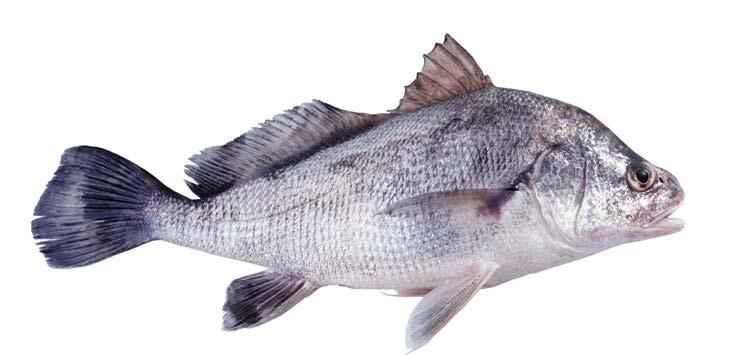
Deep-bodied, silvery-gray to dark gray with blackish fins. Young fish have four or five vertical black bars that disappear with age. Mouth inferior and horizontal, lower jaw with 10 to 13 pairs of barbels in multiple rows.
Cobia
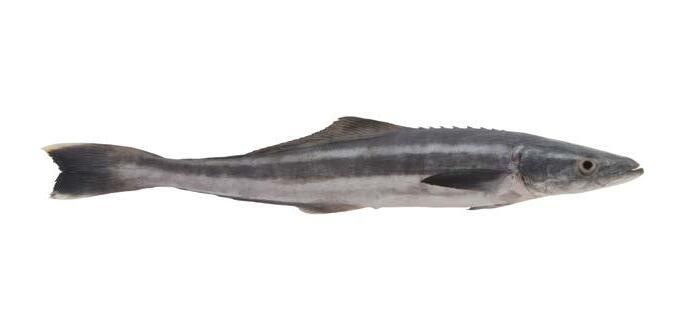
Elongated body with dark brown sides and back, two sharply defined silver bands on sides. Broad, depressed head, with large, terminal mouth. First dorsal fin consists of seven to nine short, isolated spines not connected by a membrane. Long second dorsal fin with 27 to 33 rays. Upper lobe of caudal fin longer than lower lobe.
Redfish
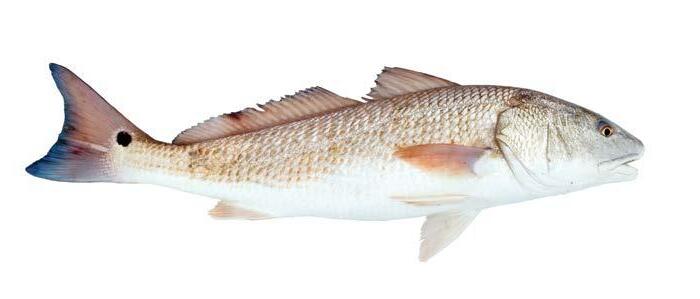
Iridescent silver-gray with a copper cast, darker above; one or more oscillated spots on upper sides from below soft portion of dorsal fin to base of caudal fin. Mouth inferior and horizontal, teeth set in bands on both jaws. Chin without barbels, smooth pre-opercular margin.
Sea Trout
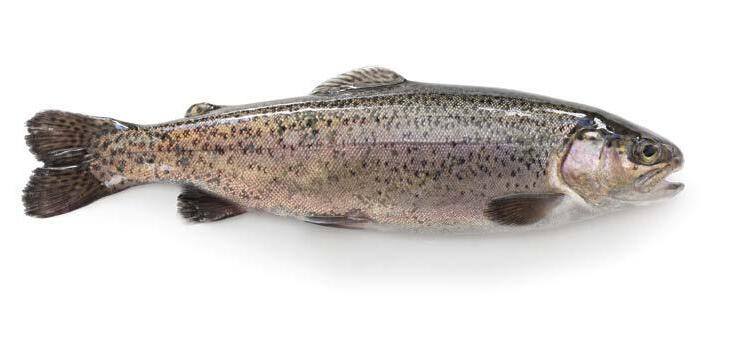
Dark gray above with bluish reflections. Numerous round black spots irregularly scattered on back and sides extend to soft parts of dorsal and caudal fins. Two large canine-like teeth at tip of upper jaw, all remaining teeth small, gradually increasing in size posteriorly on lower jaw. First dorsal fin with nine to 10 spines, second dorsal fin with one spine and 25 to 28 rays. Soft portion of dorsal fin without scales.
SOURCE: DNR.SC.GOV
SATURDAY
SUNDAY








